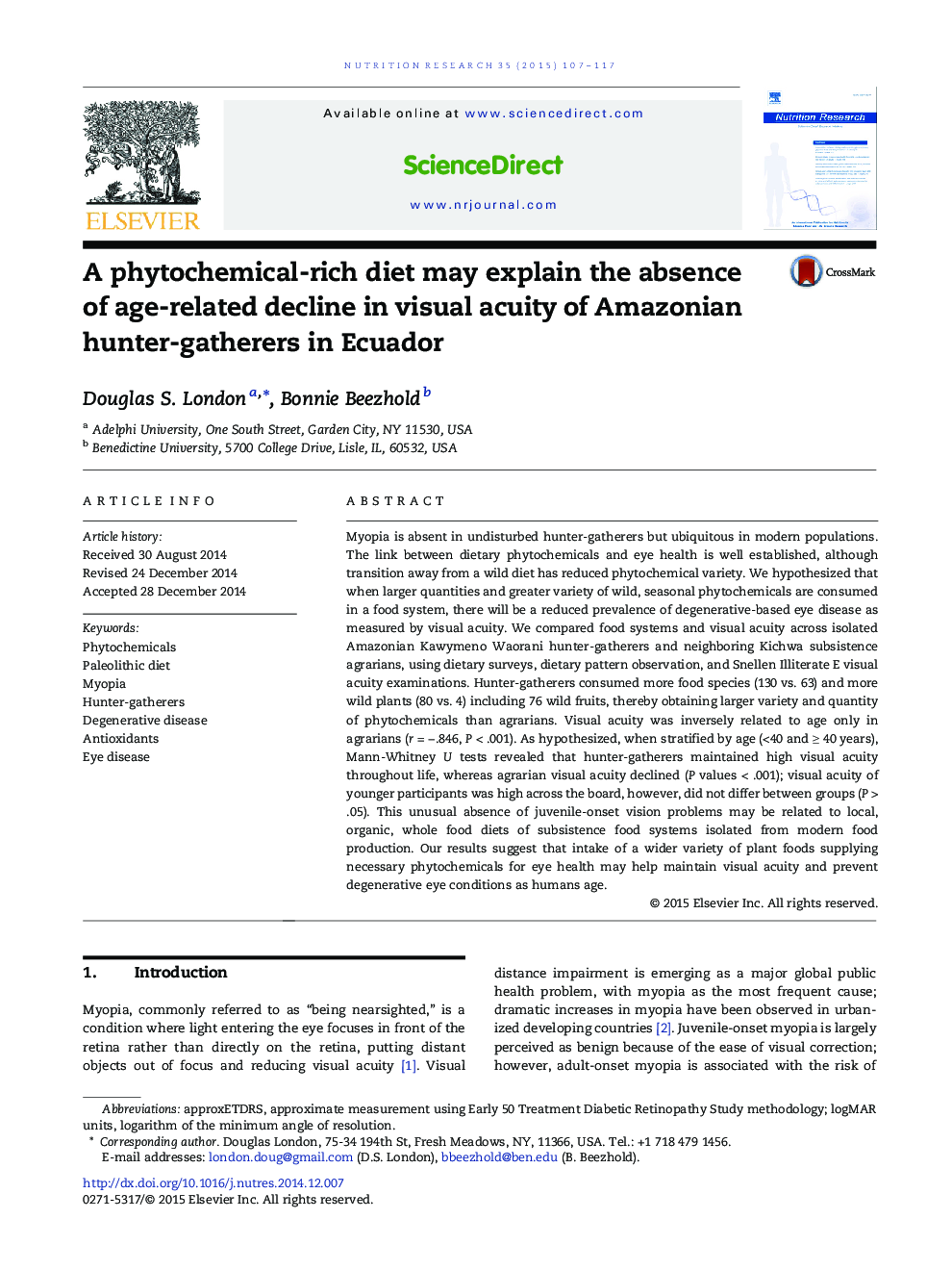| Article ID | Journal | Published Year | Pages | File Type |
|---|---|---|---|---|
| 5904536 | Nutrition Research | 2015 | 11 Pages |
Myopia is absent in undisturbed hunter-gatherers but ubiquitous in modern populations. The link between dietary phytochemicals and eye health is well established, although transition away from a wild diet has reduced phytochemical variety. We hypothesized that when larger quantities and greater variety of wild, seasonal phytochemicals are consumed in a food system, there will be a reduced prevalence of degenerative-based eye disease as measured by visual acuity. We compared food systems and visual acuity across isolated Amazonian Kawymeno Waorani hunter-gatherers and neighboring Kichwa subsistence agrarians, using dietary surveys, dietary pattern observation, and Snellen Illiterate E visual acuity examinations. Hunter-gatherers consumed more food species (130 vs. 63) and more wild plants (80 vs. 4) including 76 wild fruits, thereby obtaining larger variety and quantity of phytochemicals than agrarians. Visual acuity was inversely related to age only in agrarians (r = â.846, P < .001). As hypothesized, when stratified by age (<40 and ⥠40 years), Mann-Whitney U tests revealed that hunter-gatherers maintained high visual acuity throughout life, whereas agrarian visual acuity declined (P values < .001); visual acuity of younger participants was high across the board, however, did not differ between groups (P > .05). This unusual absence of juvenile-onset vision problems may be related to local, organic, whole food diets of subsistence food systems isolated from modern food production. Our results suggest that intake of a wider variety of plant foods supplying necessary phytochemicals for eye health may help maintain visual acuity and prevent degenerative eye conditions as humans age.
